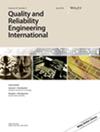用于顺序二元决策图的动态故障树中基本事件的新排序方法
IF 2.8
3区 工程技术
Q3 ENGINEERING, INDUSTRIAL
引用次数: 0
摘要
动态故障树(DFT)是对具有动态特性的复杂系统进行建模的可靠方法。然而,评估此类系统的可靠性可能非常复杂。顺序二进制决策图(SBDD)方法通过降低计算复杂度简化了这一过程。本研究调查了影响 SBDD 大小的因素,并提出了一种新方法--完整优先排序法,用于对 SBDD 中的基本事件进行排序。结果表明,与现有方法相比,该方法非常有效。本文章由计算机程序翻译,如有差异,请以英文原文为准。
A new ordering method of basic events in dynamic fault tree for sequential binary decision diagram
Dynamic fault tree (DFT) is a reliable method for modeling complex systems with dynamic characteristics. However, evaluating the reliability of such systems can be complex. The sequential binary decision diagram (SBDD) method simplifies this process by reducing computational complexity. This study investigates factors influencing SBDD size and proposes a new method, the complete priority ordering method, for ordering basic events in SBDDs. Results demonstrate the method's effectiveness in comparison to existing approaches.
求助全文
通过发布文献求助,成功后即可免费获取论文全文。
去求助
来源期刊
CiteScore
4.90
自引率
21.70%
发文量
181
审稿时长
6 months
期刊介绍:
Quality and Reliability Engineering International is a journal devoted to practical engineering aspects of quality and reliability. A refereed technical journal published eight times per year, it covers the development and practical application of existing theoretical methods, research and industrial practices. Articles in the journal will be concerned with case studies, tutorial-type reviews and also with applications of new or well-known theory to the solution of actual quality and reliability problems in engineering.
Papers describing the use of mathematical and statistical tools to solve real life industrial problems are encouraged, provided that the emphasis is placed on practical applications and demonstrated case studies.
The scope of the journal is intended to include components, physics of failure, equipment and systems from the fields of electronic, electrical, mechanical and systems engineering. The areas of communications, aerospace, automotive, railways, shipboard equipment, control engineering and consumer products are all covered by the journal.
Quality and reliability of hardware as well as software are covered. Papers on software engineering and its impact on product quality and reliability are encouraged. The journal will also cover the management of quality and reliability in the engineering industry.
Special issues on a variety of key topics are published every year and contribute to the enhancement of Quality and Reliability Engineering International as a major reference in its field.

 求助内容:
求助内容: 应助结果提醒方式:
应助结果提醒方式:


